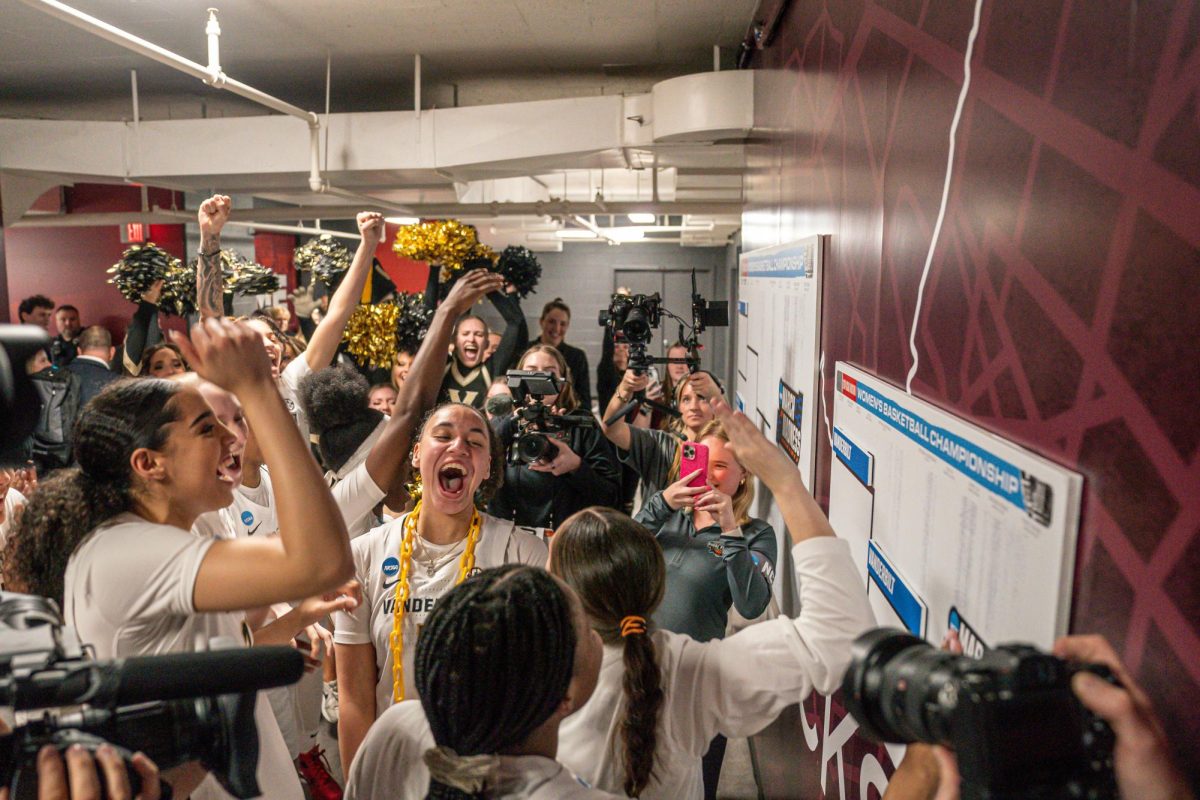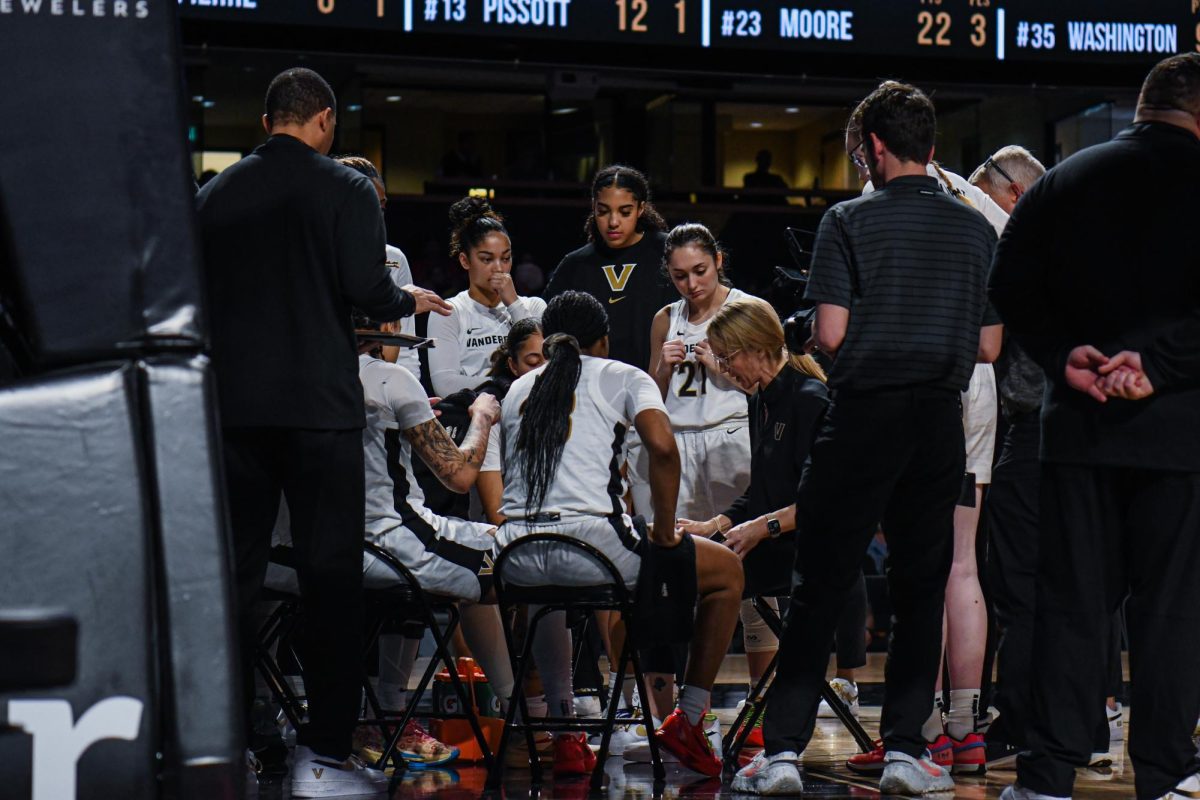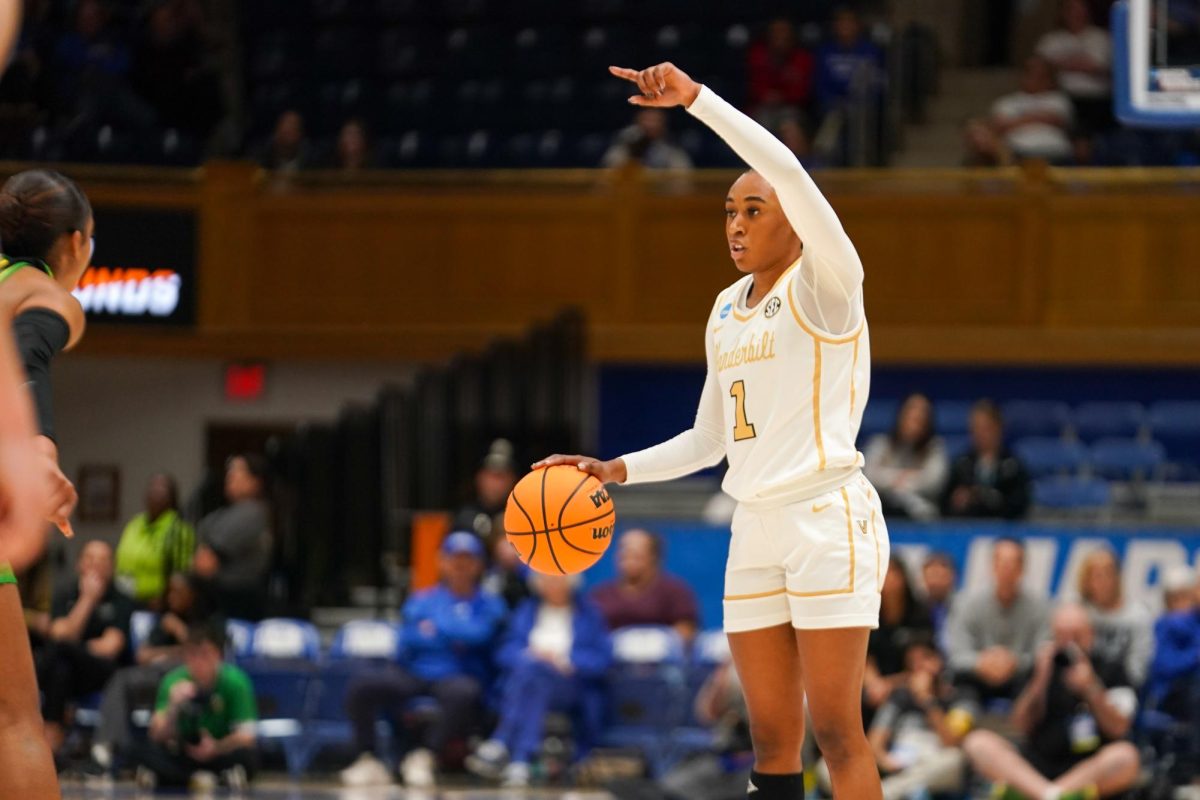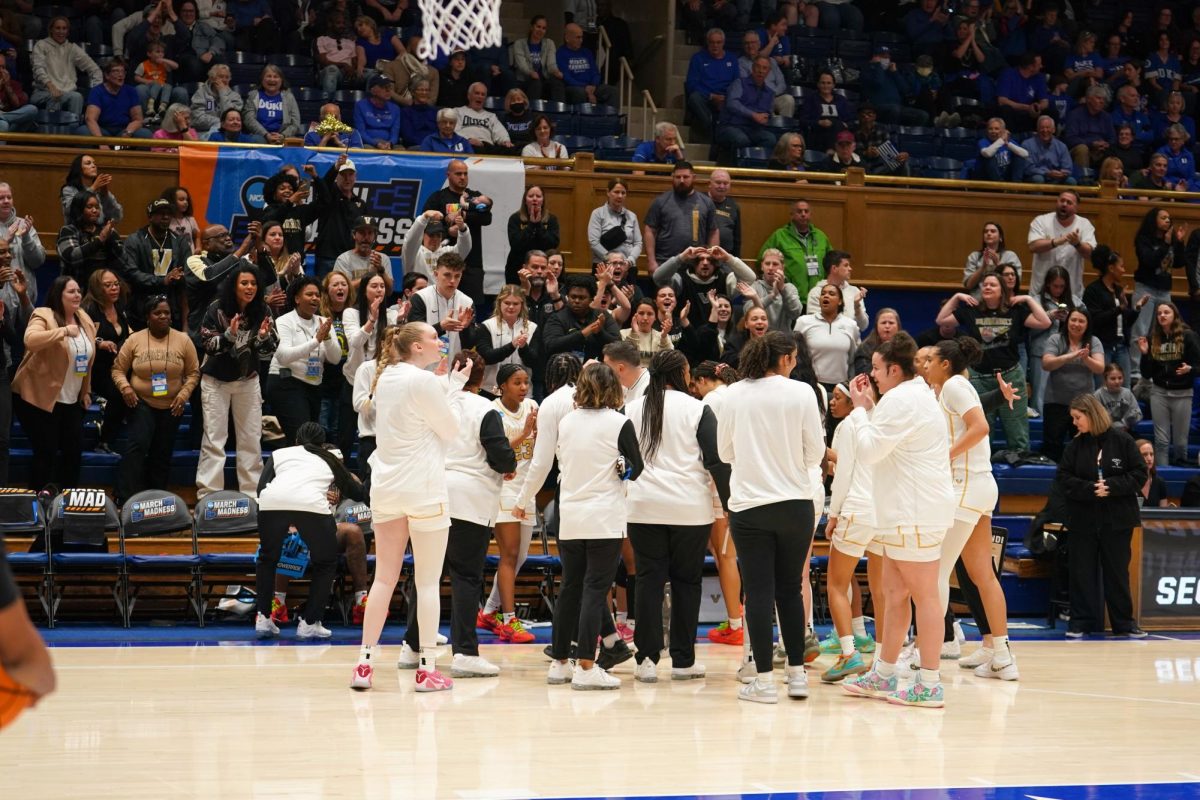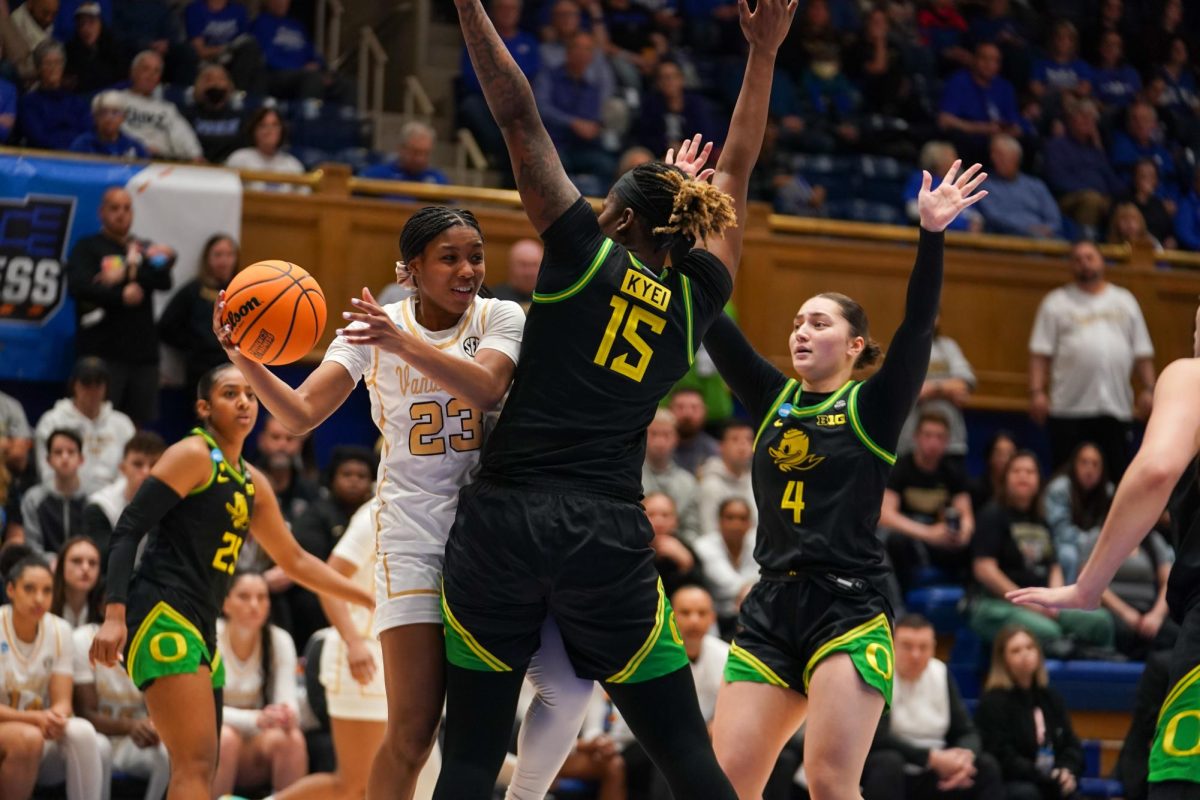Just a little over a month and a half ago, Vanderbilt Women’s Basketball was riding the high of entering conference play 13-1, the only blemish on its record being a close loss to No. 3 NC State. Now, through 11 games against SEC opponents, the Commodores are 18-7, 5-6 in conference games and currently sit at 9th in the SEC standings. Losses against No. 1 South Carolina, No. 13 LSU, Tennessee and Alabama have exposed weaknesses that previous opponents couldn’t capitalize on. For the most part, Vanderbilt has remained consistent on the offensive end, playing well through its playmakers and finding open looks. Where issues have begun to fester is on the defensive end, as a lack of presence in the paint, fouling and second chance opportunities have been key contributors to these past few losses.
However, it isn’t time to hit the panic button yet. This program is growing and has already mightily progressed from last season’s performance. In a way, Vanderbilt’s four-game was a reality check. The SEC is the most competitive conference in women’s basketball, meaning that a true testament to this program’s character will be how it responds to the challenges posed. With that being said, let’s take a look at what the Commodores have been struggling with recently.
Towering opposition
Again and again, the lack of size has been brought up in regards to this roster. Some of Vanderbilt’s tallest players, like 6’4” Justine Pissott and 6’2” Aga Makurat, do not necessarily possess the strength to play down low. That leaves smaller, stronger bodies like Sacha Washington and Khamil Pierre matching up with bigs that tower over them. Whether that was South Carolina’s 6’7” star center Kamilla Cardoso or the imposing tandem of LSU’s 6’3” Angel Reese and 6’1” Aneesah Morrow, the Commodores never match up well against teams with strong frontcourts. While teams may not always be able to make ground against Vanderbilt from the 3-point line, taking chances in the paint has paid dividends. Vanderbilt holds its opponents to 28.5% from behind the arc, but at the same time allows opponents to shoot 46.2% on all 2-point attempts.
The Commodores adopt an aggressive defense to make up for their lack of size in the paint. But, if they try to send double-teams or shift into a 2-3 zone to prevent penetration and compensate for this weakness, it opens the door for teams to find other avenues to attack Vanderbilt. There are times when Vanderbilt has done slightly well against bigger teams, such as against Ole Miss, where the Rebels were forced to strictly run their offense through star guard Marquesha Davis. Yet, premier frontcourt players have dominated Vanderbilt. Washington has talent but isn’t a quick lateral defender that can fully handle a crafty post player and Pierre does not have enough SEC experience.
Although head coach Shea Ralph has played around with lineups and defensive tactics to try to facilitate better play against taller teams, a lot of this comes down to the roster garnering experience against what the best teams in the nation will have to offer. Tall, physical players with a nose for the bucket are frequently present throughout the SEC, and if Vanderbilt wants to take a big leap going forward, it has to find answers to those types of opponents.
Giving out charity
The Commodores have not gotten to the charity stripe nearly as much as their opponents in the past few games. While Vanderbilt has had a decent mark in free throw shooting, it has lost the ability to get to the line as often as it did early on in the season. On the other hand, Vanderbilt opponents are practically bulldozing their way to easy drawn fouls and opportunities from the charity stripe. LSU shot 29 free throws to Vanderbilt’s 21. Tennessee shot 18 free throws compared to Vanderbilt’s 6. Through eleven conference games, Vanderbilt has only shot more free throws than its opposition on four occasions.
Vanderbilt isn’t a team that constantly gets into foul trouble, as the Commodores only commit 16.1 personal fouls a game. The problem, however, is that most of these fouls end up as shooting fouls, giving teams chances to go on runs amplified by drawing fouls and getting easy points at the charity stripe. For example, in the fourth quarter of the LSU game, the Tigers broke out to a quick 8-0 run in just about 90 seconds. In that span, the Tigers went 6-for-10 from the free-throw line x, turning Vanderbilt’s defensive effort into backbreaking fouls and free throws for LSU. Against Alabama, a game in which the Commodores led for most of the contest, Vanderbilt once more suffered from a barrage of free throws. Leading 54-46, Vanderbilt gave up a 14-0 run, which consisted of the Crimson Tide shooting eight free throws, making six. Even after that run, Alabama’s last 14 points of the half came from free throws. A big part of combating teams seeking to take advantage of Vanderbilt down low will be the Commodores playing cleaner defense and not falling into a habit of sending players to the line.
Second chances
At its core, the cause of this problem can’t be hung on size or power. This is an issue of positioning and fundamentals. Vanderbilt has not done well at boxing out and actively securing rebounds, giving teams ample opportunities to crash the boards and earn second chance points. The Commodores rank 11th in the SEC in rebounding, and have lost the rebound battle in five of their last six contests. The worst performances were undoubtedly against LSU and Tennessee, where Vanderbilt was outrebounded 57-35 and 40-26, respectively. In the most recent of those two games specifically, LSU scored 32 of its 85 points on second chance opportunities.
These second chance opportunities only funnel right back into the other issues this Vanderbilt team faces. Even if the Commodores have a good defensive possession and earn a stop, giving up an offensive rebound usually leads to Vanderbilt making a bad foul or allowing a quick putback. Especially when you’re competing against tough conference opponents, giving up second chance points is absolutely demoralizing and makes playing defense increasingly harder. There has to be more tenacity with how Vanderbilt plays and a part of that is taking pride in the smaller yet impactful parts of the game. When the defense finds a groove and starts to churn out stops, what will break that rhythm is letting teams crash the boards and physically dominate. If that means the Commodores have to aim to position themselves better or if they have to just garner more effort in challenging for every rebound, Vanderbilt has to refine its play when the ball comes off the rim.
As Ralph mentioned after Vanderbilt’s loss to Alabama, these consecutive losses have been “painful growth.” A program that was on a hot streak has come back down to earth by going through a gauntlet of opposition. As good as this Commodores team can be, there are still many things they have to improve if they hope to rekindle their NCAA Tournament aspirations. With five games left in the regular season, Vanderbilt has bypassed the peak of its tough ranked opponents. Out of the final five, two games will be against last place Georgia and against a struggling Missouri team. With the first step in righting the ship being taken by knocking off the Bulldogs 61-55, the next step will have to be a consistent performance in a rematch against Texas A&M on Feb. 15.






